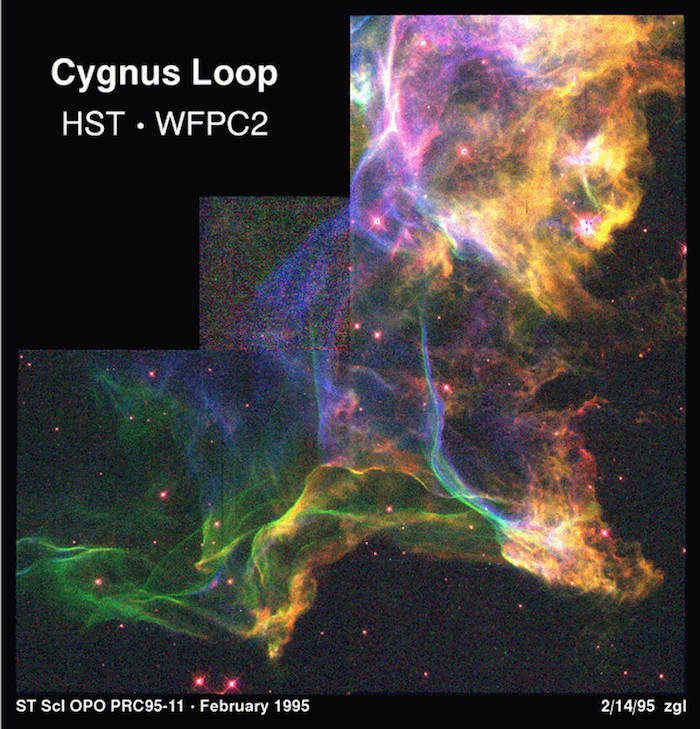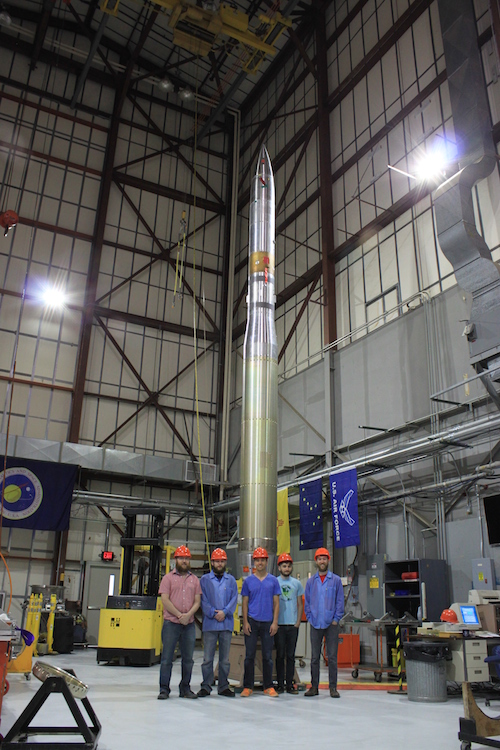.

The Cygnus Loop – as captured by the Hubble Space Telescope in 1995 – is the remnant of a supernova that exploded 20,000 years ago. A NASA-funded sounding rocket will launch in early May to examine X-rays streaming from the remnant and help classify what particles are present.
Credits: NASA/Hubble/J.Hester
.
In early May 2015, a NASA-funded sounding rocket will be ready to launch, carrying new technology to peer at the X-rays streaming from a supernova remnant called the Cygnus Loop – and assess what the debris from this 20,000-year-old explosion is made of. Flying such technology will also open the door to probe the deep universe for missing matter believed to exist, but yet to be observed.
The mission, called the Off-plane Grating Rocket for Extended Source Spectroscopy, or OGRESS, will lift off from the White Sands Missile Range in New Mexico. The launch window opens on May 2, 2015, at 4:30 a.m. EDT. OGRESS will fly on board a Terrier Black Brant rocket for a 15-minute flight that allows for five minutes of observations of the Cygnus Loop.
"Supernovae remnants are rich with astrophysical features," said Randall McEntaffer, principal investigator for OGRESS at the University of Iowa in Iowa City. "We want to show that we can resolve the details of those features – of an extremely large, diffuse object -- in high resolution."
At the heart of the OGRESS mission lies a series of optical components, etched with a specific pattern. McEntaffer and his team specialize in making these optics, called gratings. During its observation period, OGRESS will pass incoming soft X-rays across this grating, which splits the X-rays into individual wavelengths of light, to create patterns known as spectra. Centuries of spectroscopic research have taught scientists which particles emit which wavelengths of light, so these spectral patterns can show what kinds of matter are present in something like the Cygnus Loop -- or anyplace else.
"Once we know the gratings work well for this astrophysical source, then we can start probing the deep universe," said McEntaffer.
McEntaffer wants to use similar technology to search for missing matter in distant space. Astrophysicists can measure how much material is present in the universe based on the amount of light observed, but they haven't yet been able to fully categorize the composition of all that material. McEntaffer hopes that eventually he can use their grating fitted to a larger telescope with an extended time in space to identify and accurately measure the material out in the distant universe.
In the meantime, the OGRESS team will take what they learn from this flight and seek to improve their gratings. Another flight is scheduled for 2018 to observe the star Capella.
OGRESS is supported through NASA’s Sounding Rocket Program at the Goddard Space Flight Center’s Wallops Flight Facility in Wallops Island, Virginia. NASA’s Heliophysics Division manages the program.
.

The McEntaffer team stands in front of the OGRESS sounding rocket during its spin balance test.
Credits: NASA/OGRESS
Quelle: NASA
4364 Views
